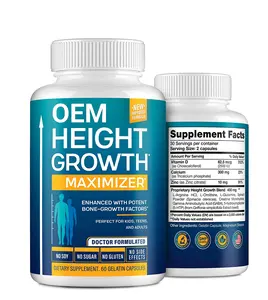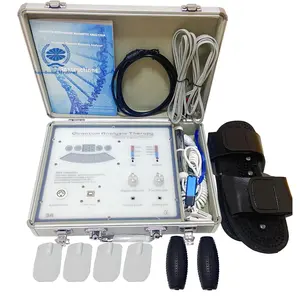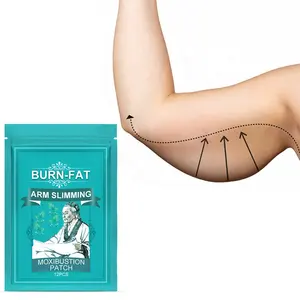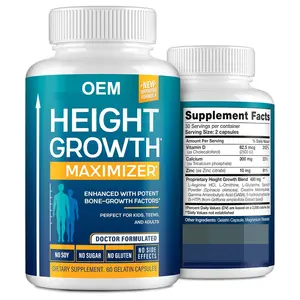Phổ biến trong ngành của bạn



Gói của 36 Chất Lượng Cao Sợi Nhỏ Khăn Dày Nhanh Chóng Khô Sàn Món Ăn Rags Thấm Làm Sạch Vải Nhà Bếp Rửa Xe Khăn
0,12 US$ - 0,25 US$
Đơn hàng tối thiểu: 500 Cái
Vận chuyển mỗi chiếc: 2,33 US$

- 10%






Fff2557 bán sỉ thấm bếp dishcloths sợi nhỏ làm sạch khăn rags món ăn rửa vải sợi nhỏ làm sạch vải
Sẵn sàng vận chuyển
0,17 US$ - 0,20 US$
Đơn hàng tối thiểu: 1000 Cái
Vận chuyển mỗi chiếc: 0,18 US$







Bán Buôn Hàng Ngày Làm Sạch Khăn Tái Sử Dụng Sợi Nhỏ Khăn Cho Rửa Xe Vải Thấm Khăn Nhà Bếp Sợi Nhỏ Làm Sạch Vải
0,10 US$ - 0,22 US$
Đơn hàng tối thiểu: 500 Cái
Vận chuyển mỗi chiếc: 2,33 US$

- 10%






Fff2612 12 12*12Inch Sợi Nhỏ Món Ăn Vải Nhà Xe Nhà Bếp Khăn Lau Bụi Rag Mềm Thấm Sợi Nhỏ Làm Sạch Vải
Sẵn sàng vận chuyển
0,22 US$ - 0,26 US$
Đơn hàng tối thiểu: 300 Cái
Vận chuyển mỗi chiếc: 0,20 US$







Tốt Nhất Bán Đa Năng Sợi Nhỏ Nhà Bếp Làm Sạch Nguồn Cung Cấp Rửa Xe Món Ăn Vải Khăn Bộ Sản Phẩm
0,05 US$ - 0,29 US$
Đơn hàng tối thiểu: 50 Cái
Vận chuyển mỗi chiếc: 0,95 US$


Superior số lượng lớn chất lượng polyester lông vải nhung tôn tạo
Đơn hàng tối thiểu: undefined






Trung quốc, Super Giá Rẻ Số Lượng Lớn Printed Polyester Voan Vải Kho
0,25 US$ - 0,45 US$
Đơn hàng tối thiểu: 5000 Mét




100% Cotton Nhung Kẻ Căng Dệt Lược Áo Sơ Mi Ăn Mặc Twill Vải Hàng Tồn Kho Số Lượng Lớn Quần Dệt Túi Áo Khoác Vải Bán Buôn 100
Sẵn sàng vận chuyển
2,59 US$
Đơn hàng tối thiểu: 100 Mét
Vận chuyển mỗi chiếc: 27,51 US$






Giá bán buôn Durable linh hoạt màu xám nhà sư tufting vải số lượng lớn tiểu tufting vải
Sẵn sàng vận chuyển
19,60 US$
Đơn hàng tối thiểu: 3 Cái
Vận chuyển mỗi chiếc: 18,78 US$






Wicking Kết Thúc Rắn Nhuộm Unifi Repreve Sinh Thái Thân Thiện T Shirt Vải 100% Tái Chế Polyester Sợi Ngang Đan Interlock Lưới Vải
1,45 US$ - 1,95 US$
Đơn hàng tối thiểu: 800 Mét






Bông châu phi sáp thực vải in/phi cotton bất wax in vải
0,95 US$ - 0,98 US$
Đơn hàng tối thiểu: 10000 Yard






Kiểm Tra Vải Sợi Nhuộm Vải Cho Áo Sơ Mi Người Phụ Nữ Ăn Mặc Áo Cánh
Sẵn sàng vận chuyển
1,64 US$ - 2,22 US$
Đơn hàng tối thiểu: 1 Mét
Vận chuyển mỗi chiếc: 7,17 US$






Hot selling 100% polyester children new fabric rolls Jacquard fabric cloth in bulk
Sẵn sàng vận chuyển
4,45 US$
Đơn hàng tối thiểu: 25 Kilogram
Vận chuyển mỗi chiếc: 8,35 US$






Nhà Máy Cung Cấp Bán Buôn 100% Bông Nhuộm Vải Nặng Trọng Lượng 16 Oz Ounce 440-450gsm Vải Vải Cho Totes Túi
Sẵn sàng vận chuyển
3,32 US$ - 4,52 US$
Đơn hàng tối thiểu: 1 Mét
Vận chuyển mỗi chiếc: 17,00 US$






Nhiệt độ cao công nghiệp hàn cuộn Silicone đen dầu cao su kháng thô bọc vải vải
0,50 US$ - 1,40 US$
Đơn hàng tối thiểu: 3000 Mét






Nhà Máy Trung Quốc Cung Cấp Vải Làm Sạch Vi Sợi 80% Polyester 20% Polyamide Vải Terry CuộN Số Lượng Lớn
3,20 US$ - 3,60 US$
Đơn hàng tối thiểu: 500 Kilogram






Tùy Chỉnh Sang Trọng Dệt Kim Hà Lan Nhung Bronzing Vải Nhung Nổi Vải Cho Đồ Nội Thất Bọc
1,90 US$
Đơn hàng tối thiểu: 800 Mét






Nhà Máy Bán Buôn Không Thấm Nước Nâu Bronzing Polyester Công Nghệ Nhung Vải Như Da Sofa Vải
1,78 US$ - 2,00 US$
Đơn hàng tối thiểu: 1000 Mét
Vận chuyển mỗi chiếc: 1,57 US$






Vải Satin Cho Cô Dâu Nhà Cung Cấp Vải Trung Quốc Vải Satin Phông Nền Váy Cưới Vải Satin
0,35 US$ - 0,50 US$
Đơn hàng tối thiểu: 2000 Mét






Bán Số Lượng Lớn Giá Rẻ Đồng Bằng Pháp Terry Vải Một Mặt Vải Cotton Cho Hoodies
1,00 US$ - 5,00 US$
Đơn hàng tối thiểu: 400 Kilogram

Phi sáp vải in số lượng lớn lớn Hữu Cơ calico bông vải bán buôn tissus Batik bông vải in bông vải
0,90 US$ - 1,25 US$
Đơn hàng tối thiểu: 7800 Yard






Vải PUL Chống Thấm Nước Vải PUL In Kỹ Thuật Số Tùy Chỉnh Cho Tã Em Bé Vải Giặt Được, Mẫu Miễn Phí
3,93 US$ - 7,00 US$
Đơn hàng tối thiểu: 1 Mét
Vận chuyển mỗi chiếc: 12,44 US$






Mẫu Miễn Phí Thời Trang Thiết Kế Mới Nhất Bán Số Lượng Lớn Hoa In Vải 100% Cotton Chất Liệu Lớn Hoa Mẫu Váy May Mặc Vải
Sẵn sàng vận chuyển
1,08 US$ - 3,46 US$
Đơn hàng tối thiểu: 1 Mét
Vận chuyển mỗi chiếc: 339,23 US$






160g dệt trơn E vải sợi thủy tinh số lượng lớn để xử lý silane
Sẵn sàng vận chuyển
0,90 US$ - 1,00 US$
Đơn hàng tối thiểu: 1 Mét vuông
Vận chuyển mỗi chiếc: 150,00 US$

100% ấn độ tinh khiết linen rắn số lượng lớn shirting vải linen nhà sản xuất vải
2,70 US$ - 3,20 US$
Đơn hàng tối thiểu: 500 Mét






Vải Kiểm Tra Bảng Vải 100% Cotton Kiểm Tra Áo Sơ Mi Vải Cổ Phiếu Sợi Nhuộm Quần Kiểm Tra Vải Của Nhà Sản Xuất Ấn Độ
1,90 US$ - 3,50 US$
Đơn hàng tối thiểu: 500 Mét






Ccws2/mooso 97% Cotton 3% Spandex 3/1 Twill áo khoác ngoài trời 260gsm cotton spandex 3/1 Twill vải cho vải
2,72 US$ - 2,80 US$
Đơn hàng tối thiểu: 100 Mét
Vận chuyển mỗi chiếc: 1,80 US$



Bán cũng mới loại bán buôn vải cotton trong số lượng lớn, bán buôn nhật bản vải cotton, wide cotton vải
3,10 US$ - 9,00 US$
Đơn hàng tối thiểu: 1 Mét






Vải Canvas Nhuộm Cotton Tùy Chỉnh Giá Rẻ Bán Sỉ Mới Cho Vải/Túi/Giày
0,72 US$ - 2,00 US$
Đơn hàng tối thiểu: 500 Mét






Vải Dệt May Trong Nhà Hàng Có Sẵn Vải Loại Vải Lanh Polyester Vải Sofa Bền Nhất Vải Lanh
12,53 US$ - 13,03 US$
Đơn hàng tối thiểu: 30 Mét





Vải Sợi Microfiber Tùy Chỉnh Độ Đàn Hồi Cao Với Số Lượng Lớn
39,00 US$ - 150,00 US$
Đơn hàng tối thiểu: 1 Cái






Cao theo yêu cầu thiết kế sang trọng may bông vải cho nhà dệt làm sạch vải từ Ấn Độ xuất khẩu
2,99 US$ - 7,99 US$
Đơn hàng tối thiểu: 10 Yard


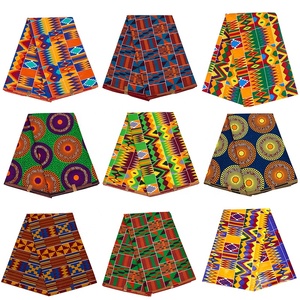



Mua Số Lượng Lớn Vải Batik Cotton In Châu Phi/Bán Buôn Vải Cotton Ai Cập Tùy Chỉnh/Vải Cotton In
2,00 US$ - 2,70 US$
Đơn hàng tối thiểu: 6 Yard






Phi sáp vải in số lượng lớn lớn bông vải bán buôn pagne siêu waxs Hà Lan bông vải in bông vải
0,40 US$ - 0,70 US$
Đơn hàng tối thiểu: 9000 Yard
Vận chuyển mỗi chiếc: 48,44 US$






Vải Xám Mềm Giá Tùy Chỉnh Vải Greige Dệt Kim Màu Trắng Cotton Polyester Nguyên Liệu Thô Cho Quần Áo Trẻ Em May Mặc
1,99 US$ - 2,89 US$
Đơn hàng tối thiểu: 500 Kilogram
Vận chuyển mỗi chiếc: 0,90 US$






Giá Số Lượng Lớn Tùy Chỉnh Mềm Xám Vải Cotton Polyester Trắng Knit Greige Vải Dệt Nguyên Liệu Cho Trẻ Em Quần Áo May Mặc
1,99 US$ - 4,49 US$
Đơn hàng tối thiểu: 500 Kilogram






New CORNFLOWER Blue & White Ấn Độ Hoa Tay khối in 100% tinh khiết vải cotton vải bởi sân Dresses gối đệm
4,50 US$ - 6,50 US$
Đơn hàng tối thiểu: 50 Yard





Cheap Polypropylene Fibc Bulk Big Ton Flat Pp Woven Tubular Fabric Jumbo Bag Sack Cloth Sheet Roll For Mexico
1,45 US$ - 1,75 US$
Đơn hàng tối thiểu: 1000 Kilogram






Đẹp In Bong Bóng Pop Số Lượng Lớn Dty Polyester Voan Vải Cho Trang Phục
1,45 US$ - 1,75 US$
Đơn hàng tối thiểu: 50 Mét
Vận chuyển mỗi chiếc: 3,46 US$
Các danh mục hàng đầu
Giới thiệu về vải số lượng lớn
Ngày nay, vải số lượng lớn không còn là điều mới mẻ đối với những người bình thường và không còn bị coi là điều cấm kỵ khi sử dụng. Nếu bạn đang tìm kiếm niềm vui áp chót đó, bạn phải kiểm tra sự bao la. Bộ sưu tập vải số lượng lớn tại Alibaba.com. Những gợi cảm và cong. vải số lượng lớn đáng giá từng xu và chắc chắn làm cho đêm đó trở nên đặc biệt đối với bạn. Những con búp bê này có ngoại hình giống như thật, bắt đầu từ tóc đến ngón chân theo mọi nghĩa.
Cho dù bạn là một người cô đơn đang tìm kiếm một người bạn đời như cuộc sống hay một cặp vợ chồng muốn thêm gia vị cho cuộc sống của họ, bạn đều có thể sử dụng chúng . vải số lượng lớn để đốt cháy ngọn lửa đó. Những ngoạn mục. vải số lượng lớn có thể tùy chỉnh theo mong đợi của bạn. Những điều tuyệt vời. vải số lượng lớn có sẵn ở cả phiên bản dành cho nam và nữ và được làm từ silicone cấp y tế để sử dụng an toàn. Hãy sở hữu ngay bây giờ và tận hưởng một đêm đam mê và cháy bỏng.
Alibaba.com cung cấp những điều tuyệt vời này. vải số lượng lớn ở mọi hình dạng cơ thể, kích thước và sắc tộc. Dù yêu cầu của bạn đối với. vải số lượng lớn, bạn có thể tải tất cả chúng trên trang web. Những cái này. vải số lượng lớn được tạo hình bởi những người thợ thủ công giỏi nhất và mọi chi tiết phức tạp đều được kiểm tra kỹ lưỡng. Những con búp bê này có mắt, tóc, móng tay và tất cả các bộ phận cơ thể khác tương tự như người thật.
Alibaba.com cung cấp nhiều loại. vải số lượng lớn có thể giúp bạn mua các sản phẩm phù hợp với ngân sách và các yêu cầu khác của bạn. Các sản phẩm này an toàn để sử dụng, được chứng nhận và thân thiện với môi trường trong tự nhiên. Đơn đặt hàng OEM có sẵn trên các sản phẩm này.
Cho dù bạn là một người cô đơn đang tìm kiếm một người bạn đời như cuộc sống hay một cặp vợ chồng muốn thêm gia vị cho cuộc sống của họ, bạn đều có thể sử dụng chúng . vải số lượng lớn để đốt cháy ngọn lửa đó. Những ngoạn mục. vải số lượng lớn có thể tùy chỉnh theo mong đợi của bạn. Những điều tuyệt vời. vải số lượng lớn có sẵn ở cả phiên bản dành cho nam và nữ và được làm từ silicone cấp y tế để sử dụng an toàn. Hãy sở hữu ngay bây giờ và tận hưởng một đêm đam mê và cháy bỏng.
Alibaba.com cung cấp những điều tuyệt vời này. vải số lượng lớn ở mọi hình dạng cơ thể, kích thước và sắc tộc. Dù yêu cầu của bạn đối với. vải số lượng lớn, bạn có thể tải tất cả chúng trên trang web. Những cái này. vải số lượng lớn được tạo hình bởi những người thợ thủ công giỏi nhất và mọi chi tiết phức tạp đều được kiểm tra kỹ lưỡng. Những con búp bê này có mắt, tóc, móng tay và tất cả các bộ phận cơ thể khác tương tự như người thật.
Alibaba.com cung cấp nhiều loại. vải số lượng lớn có thể giúp bạn mua các sản phẩm phù hợp với ngân sách và các yêu cầu khác của bạn. Các sản phẩm này an toàn để sử dụng, được chứng nhận và thân thiện với môi trường trong tự nhiên. Đơn đặt hàng OEM có sẵn trên các sản phẩm này.
